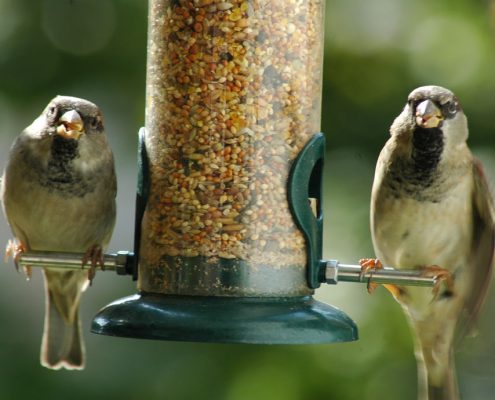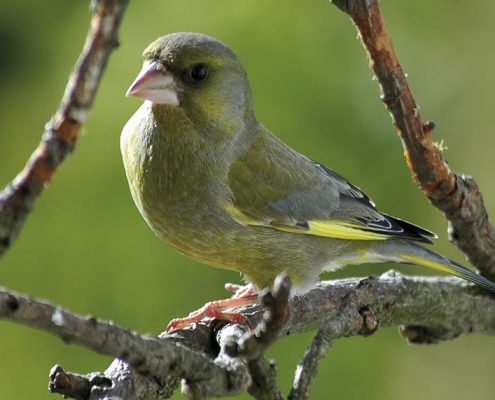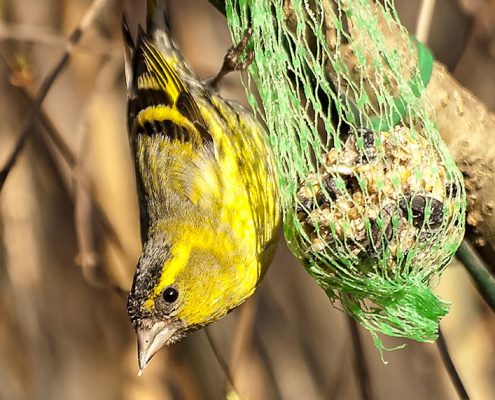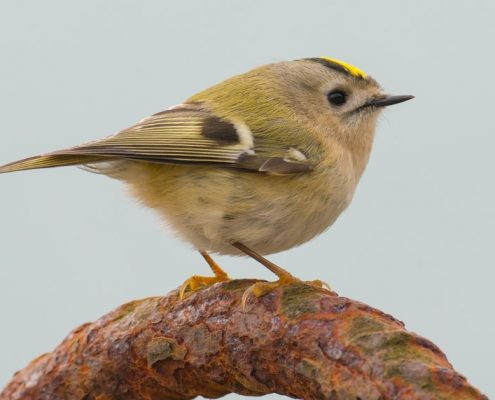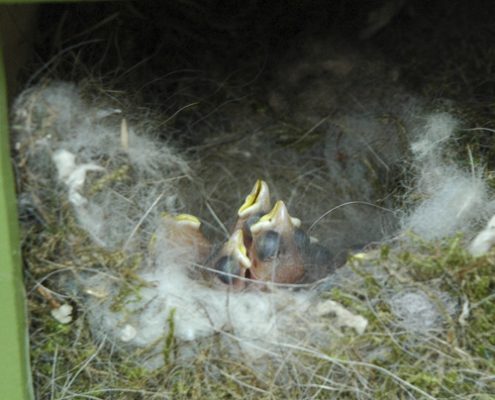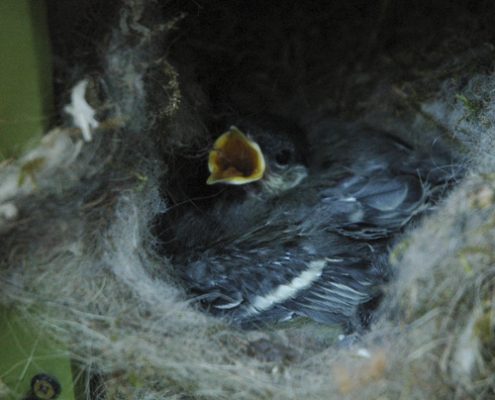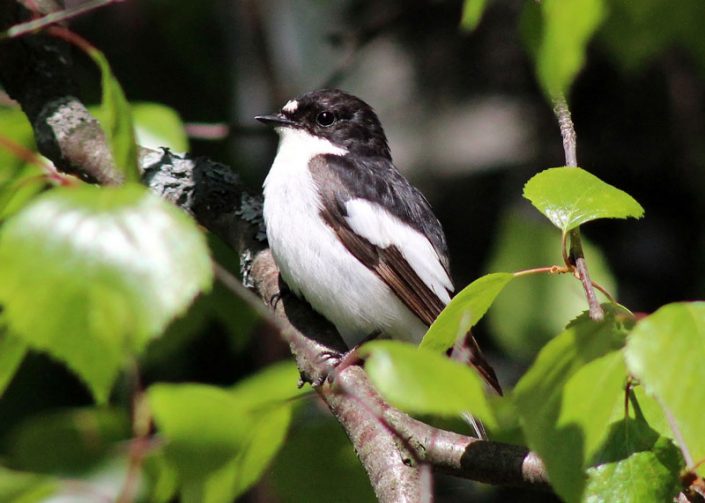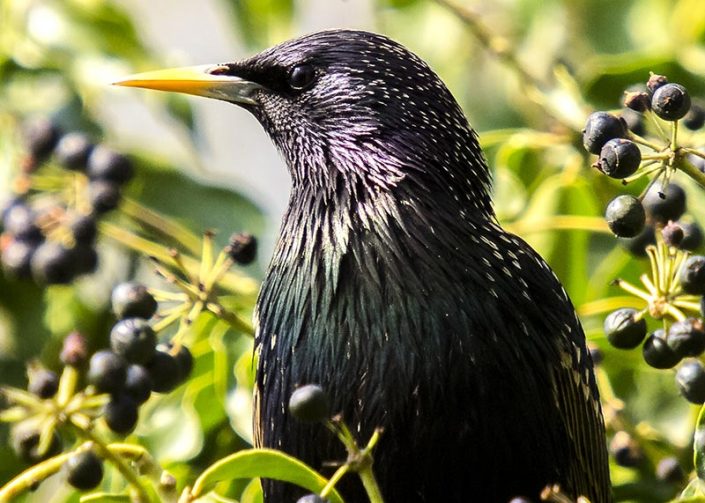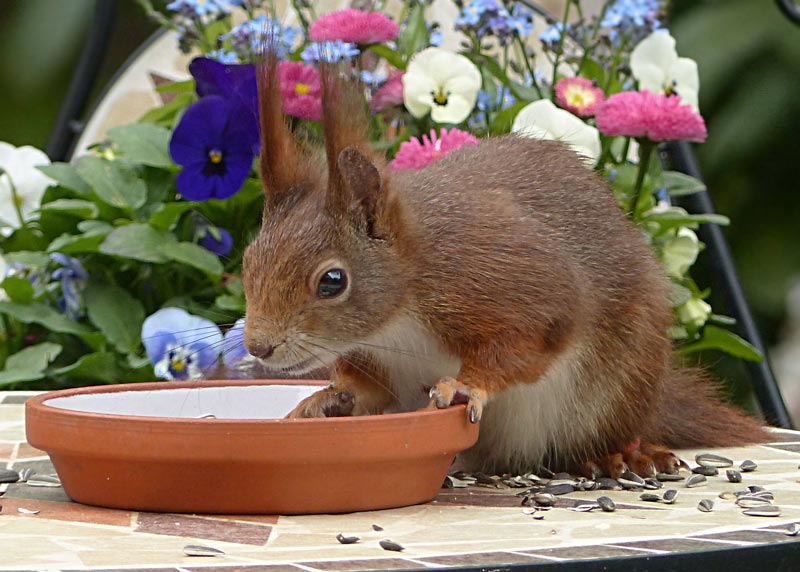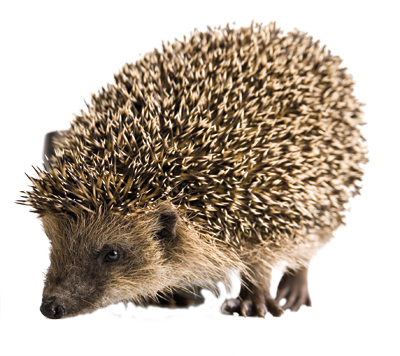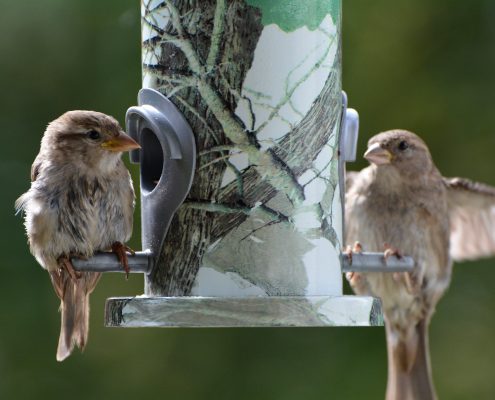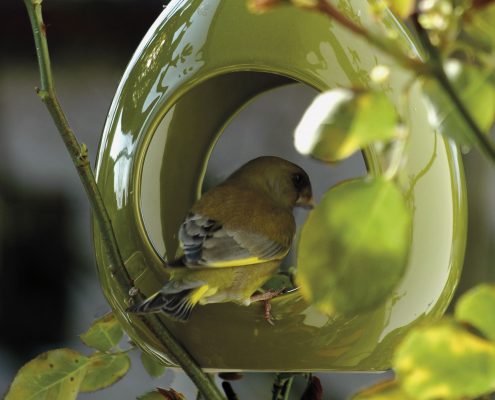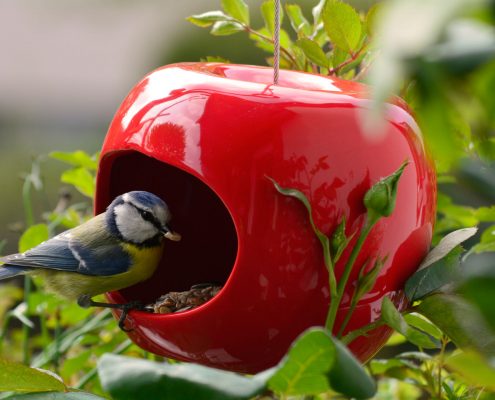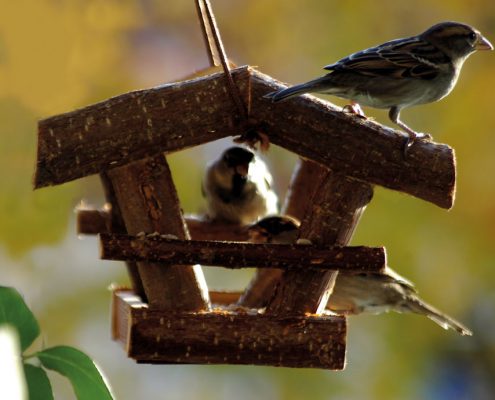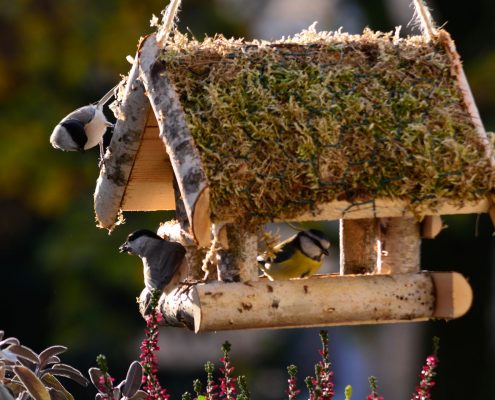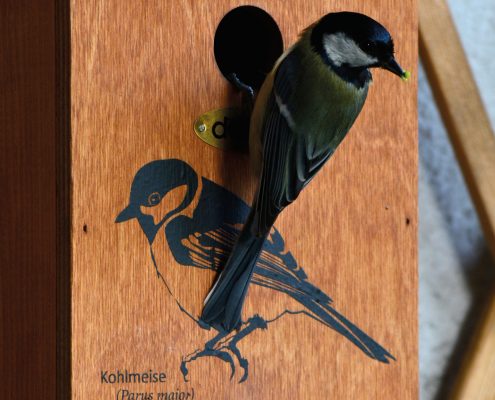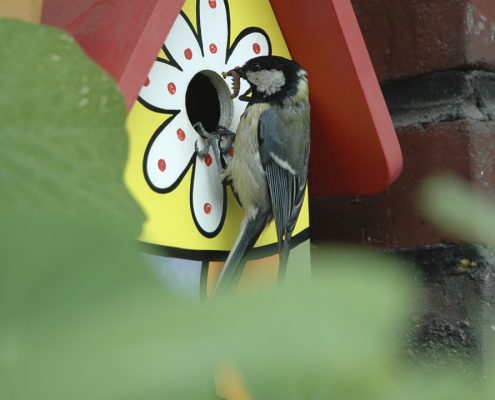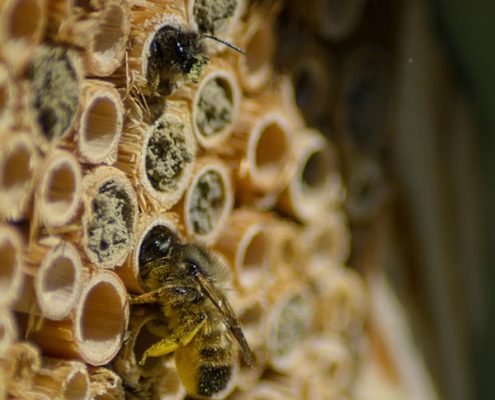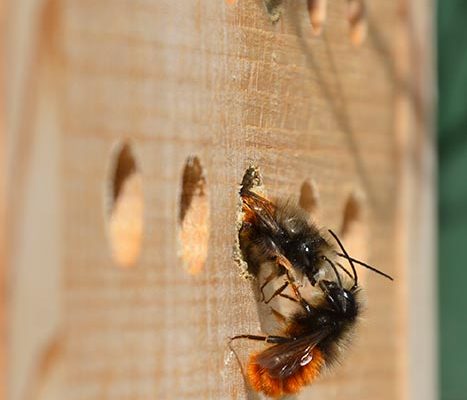Wild birds – all year round feeding
Why feed birds?
There is less natural food available.
Since the mid-20th century the number and diversity of species of our native wild birds has been rapidly diminishing because of the loss and degradation of habitat. Increasing construction, together with intensified farming methods and the use of pesticides makes it more difficult for the birds to find food. On monocultures with almost no wild herbs and in insect-free gardens planted with exotics the food supply is significantly lower than on the farms, in the kitchen gardens and orchards, which used predominantly to be cultivated on a small scale.
Species, which used to be common, are already endangered!
This trend has also affected formerly common species, such as house and tree sparrows, starlings and skylarks. Populations of species which are not yet endangered, such as tits, should be protected, before they dwindle. To replace the habitats they used to have, we are left with the alternative of feeding wild birds and when we have a garden, of organising it on natural lines.
Feeding wild birds is a contribution to species protection
Correct feeding makes a valuable contribution to the protection of species and to preserving the variety of species. It gives back to the birds, that which our culture has taken from them. And not least, observing the colourful behaviour of our feather guests at the feeding site gives us pleasure. Even on a balcony in a town or city you can conjure up a little bird paradise. In the urban environment as well there are many different species, which regularly seek out the feeding site.


